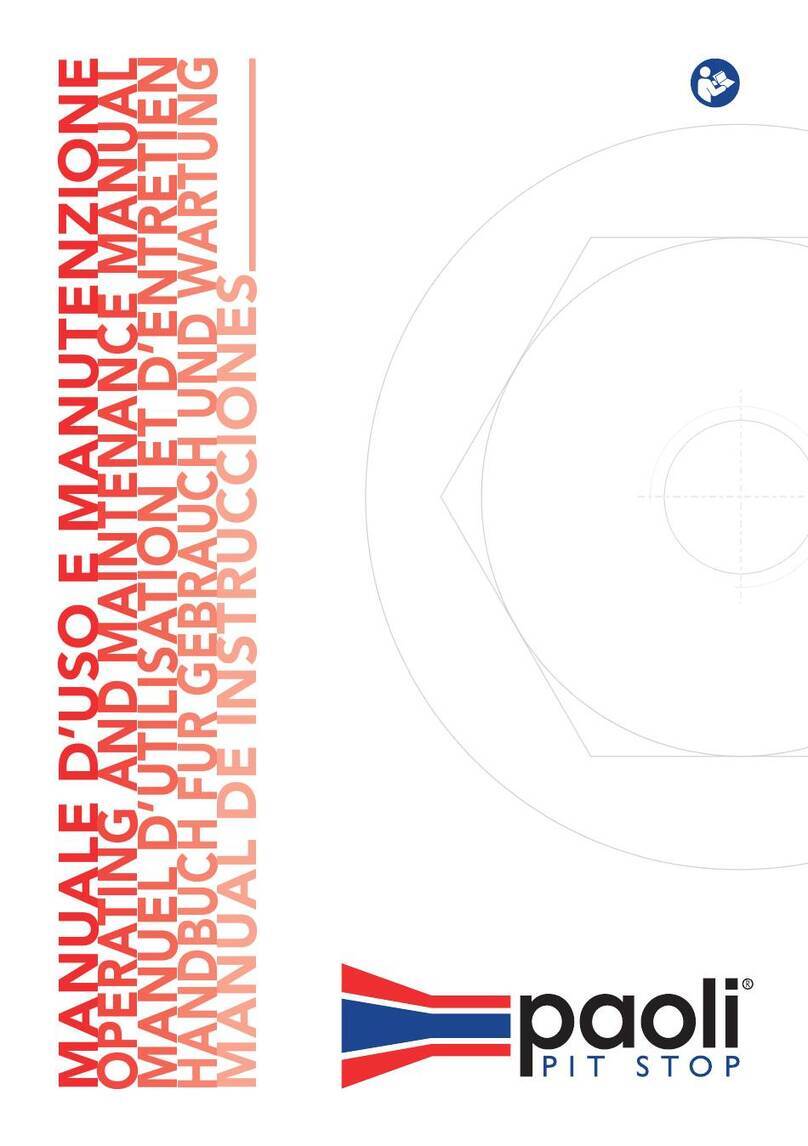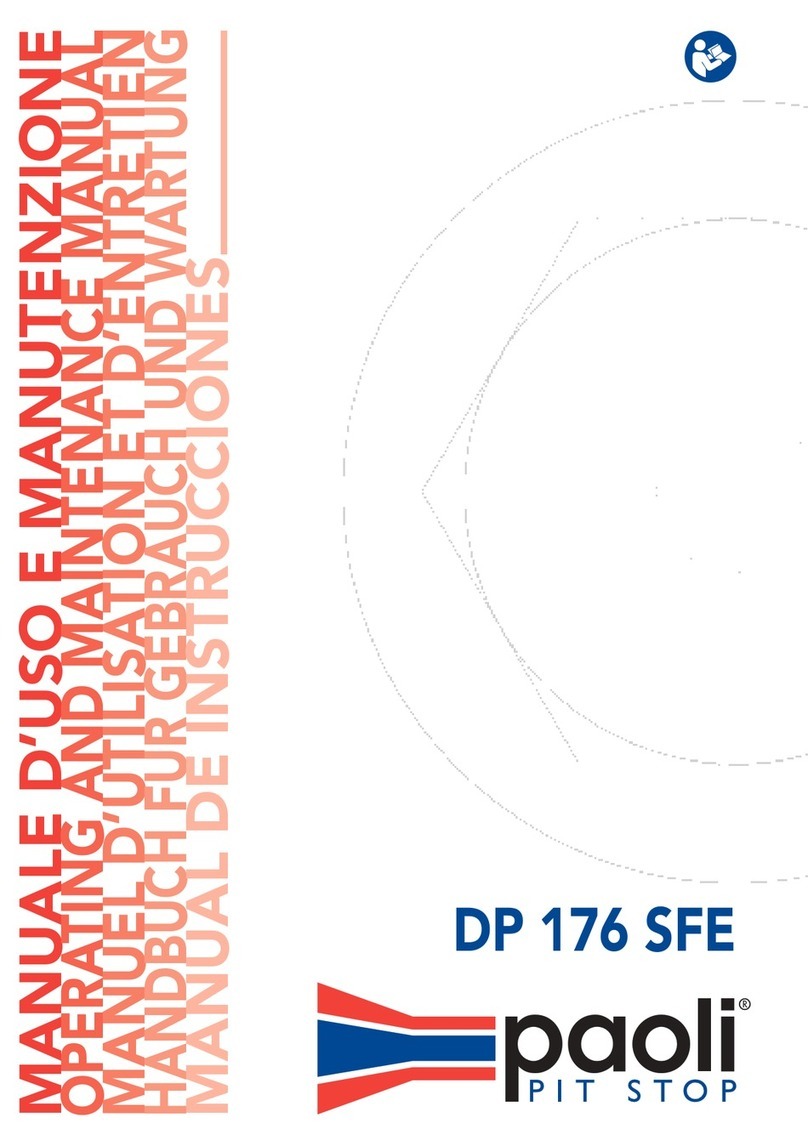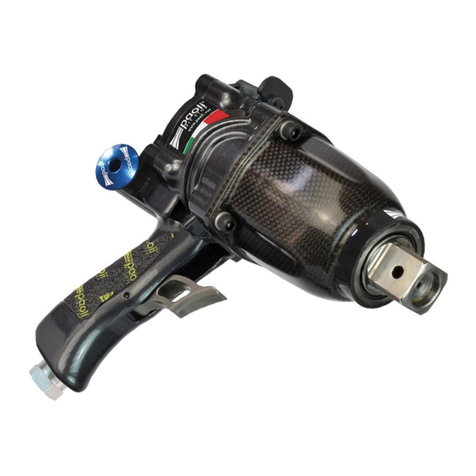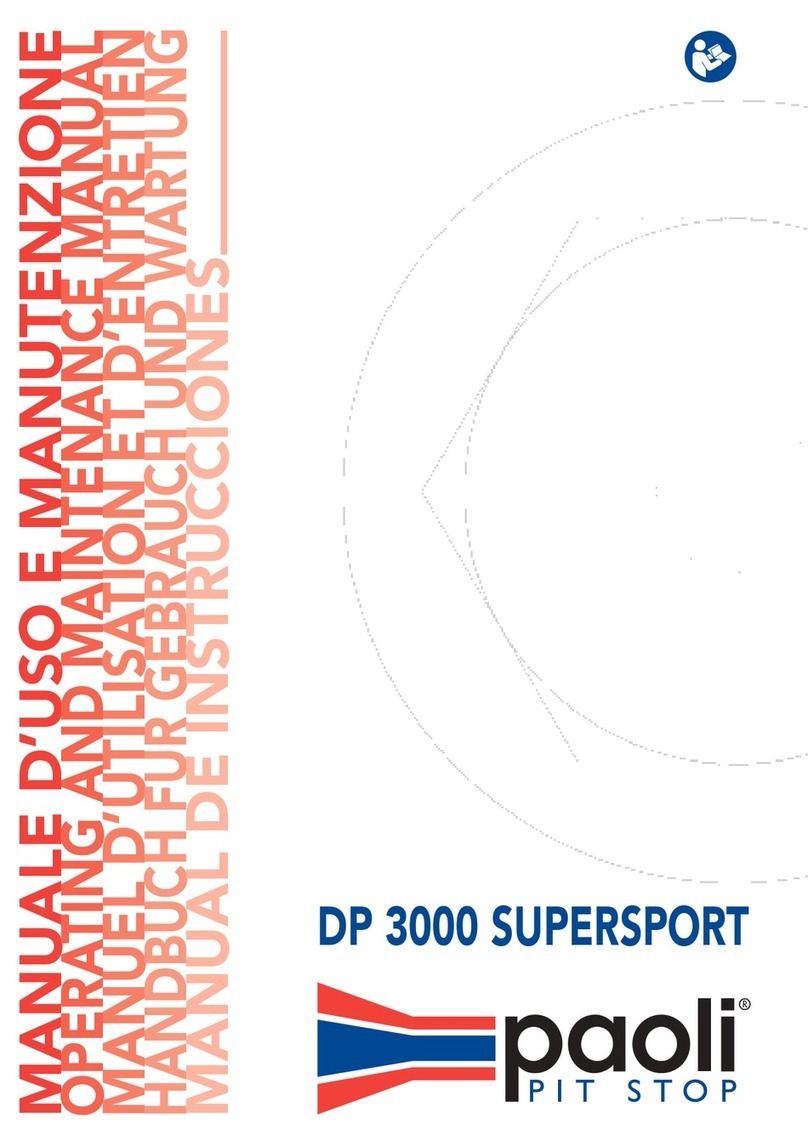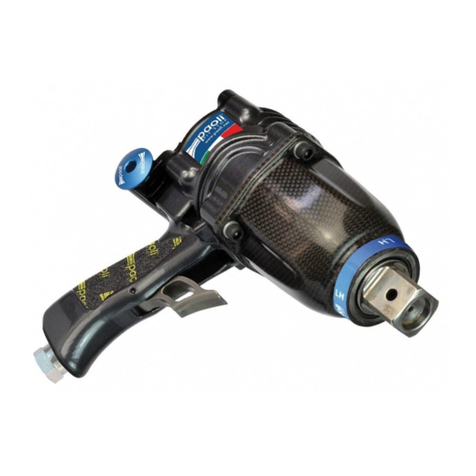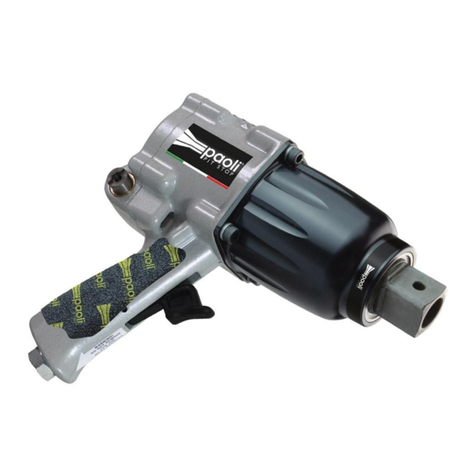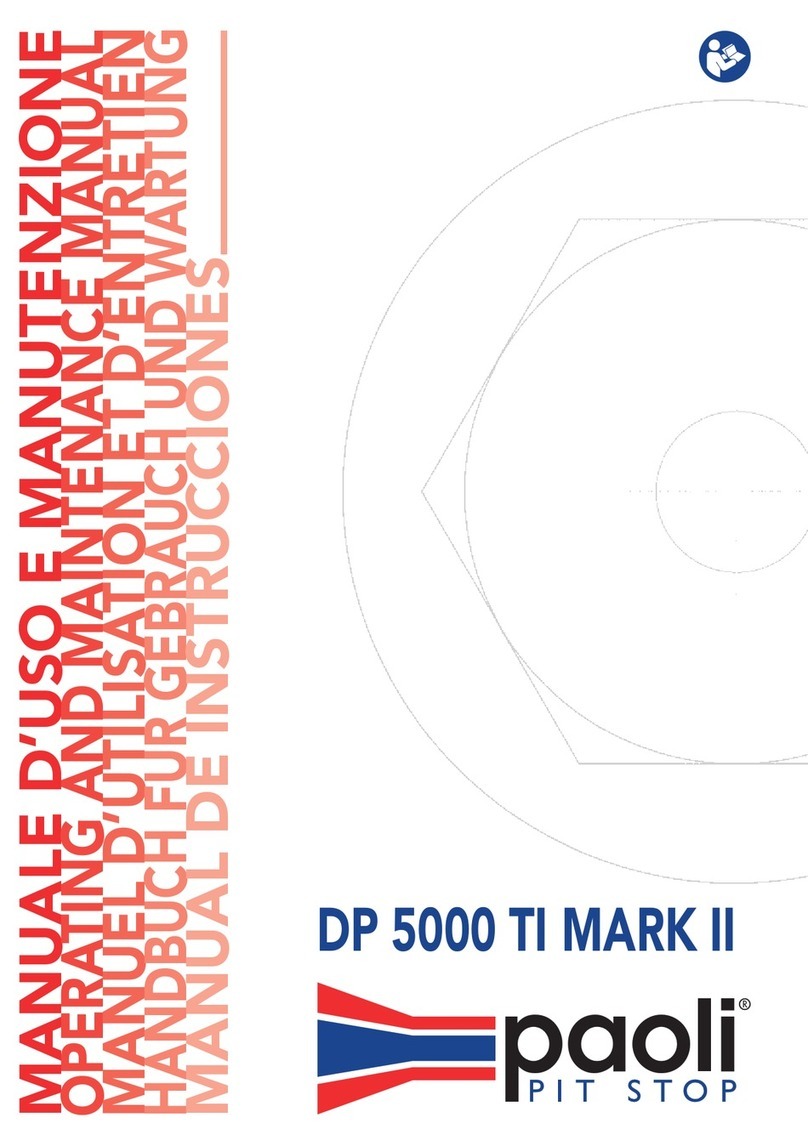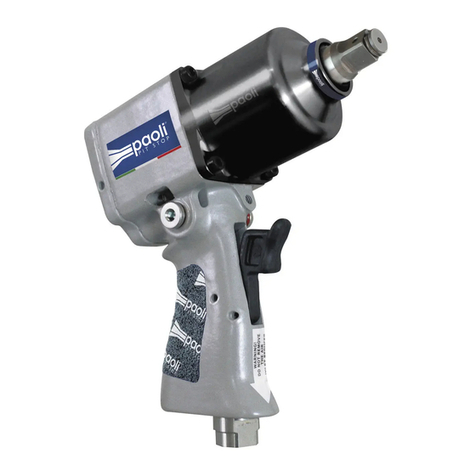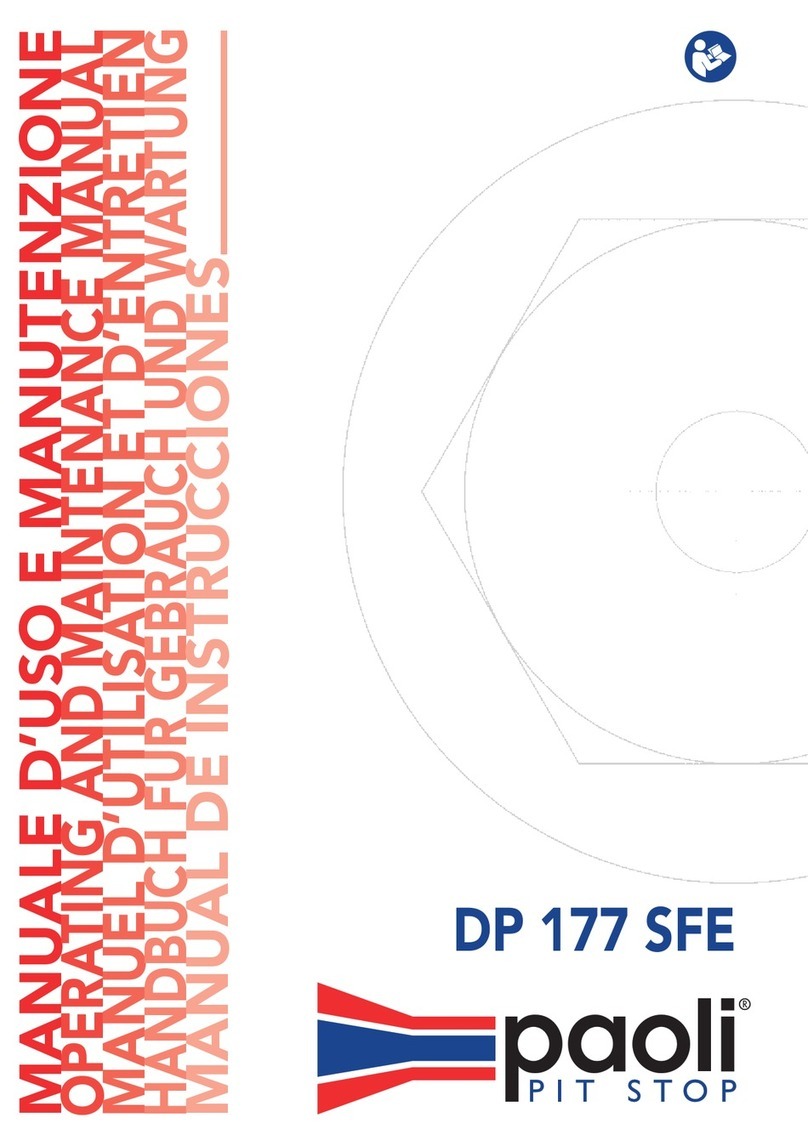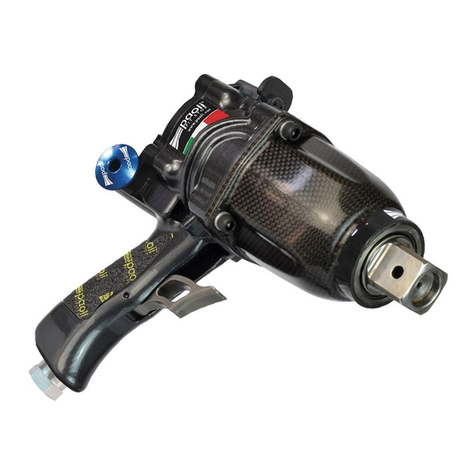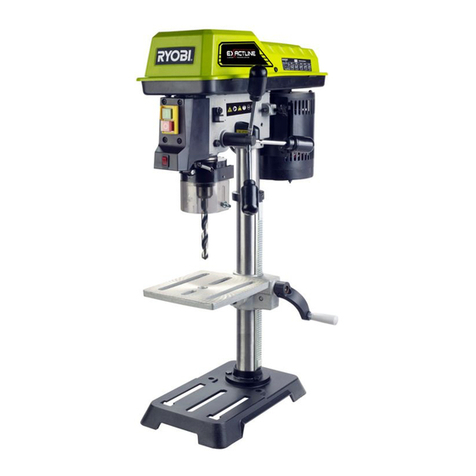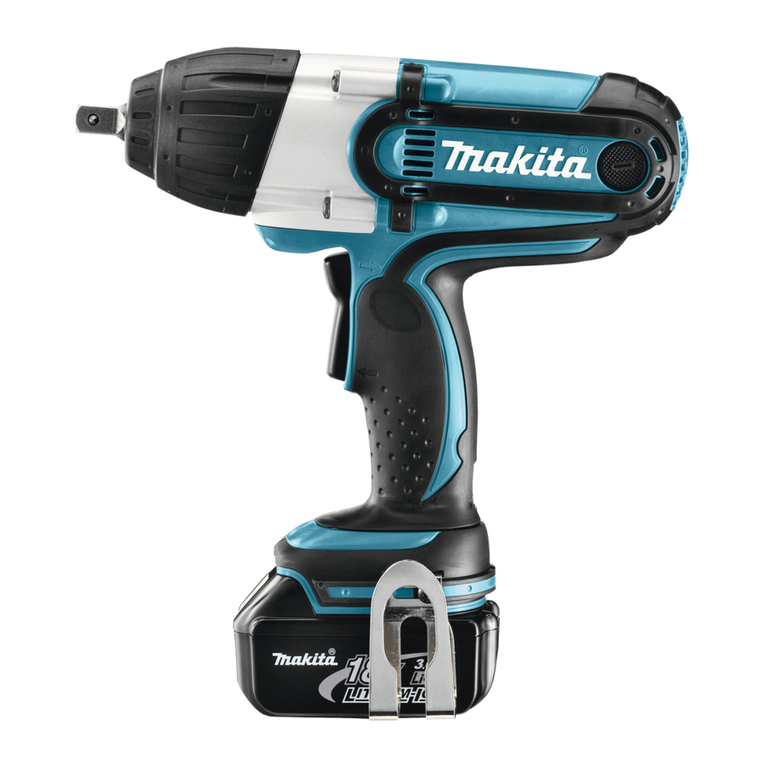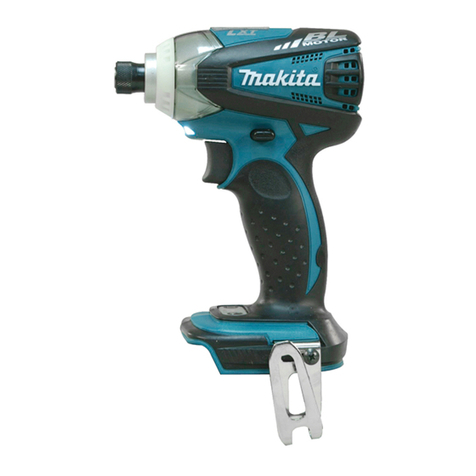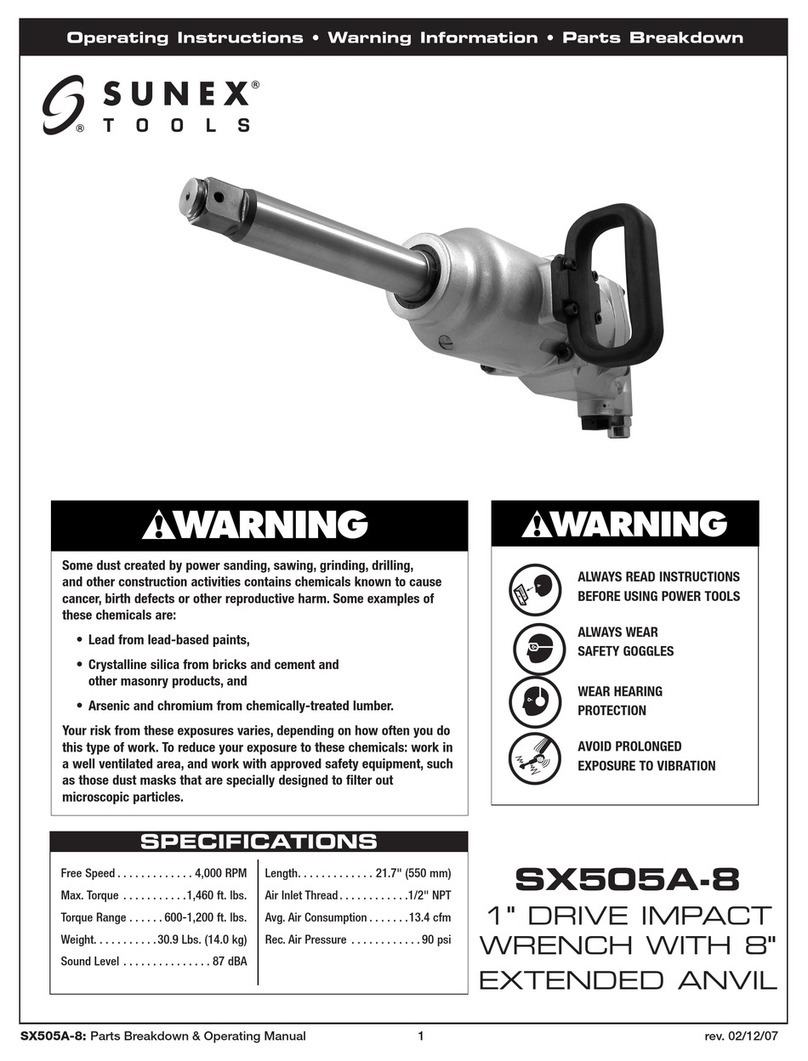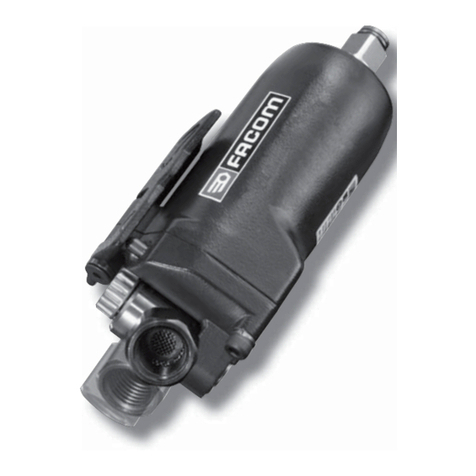
ENGLISH 9
CAUTION
When you use compressed air tools, always check
that the safety regulations which apply in your
workplace are respected, as well as those in the
following instructions, in order to reduce the risk
of environmental and personal damage.
wWear safety glasses and hearing protection.
wIf necessary, wear dust mask and gloves.
wWear suitable working clothes and safety shoes.
wDo not use the tool continuously, do a break
periodically
For operator safety:
Keep the work area clean. An untidy workplace or
bench may cause personal damage.
Check the conditions of workplace. Check that
the lighting is adequate. If the materials being
worked produce sparks, do not use the tools
in the presence of inammable liquids, gases
or material. Do not use the tool in potentially
explosive atmospheres (ATEX).
Keep unauthorised persons at a safe distance.
Do not let them touch the tools. Visitors should be
kept away from the workplace.
Do not overload the tools. They will work better
and in safe conditions if they are tted with suitable
tubing and are used at the pressure indicated in
this manual.
Use the right tool. Check the conditions of the
working tools (impact sockets, etc.) before each
start-up and replace if damaged or worn.
Improper uses and absolutely forbidden:
wUse the tool for any purpose and uses different
from that required in this manual
wDirect the tool or accessories against people
or animals
wUse the tool or accessories like hammer, lever
or blunt object
Wear suitable clothing. Do not wear clothing or
jewellery which could get caught in moving parts.
Protective gloves and non-slip safety shoes should
be worn when working outside. Long hair should
be kept in a hairnet.
Use personal protection. Your should always wear
noise-proof ear protection, safety goggles with
de-mist screen, work gloves, ltered mouth mask
and anything else necessary to prevent contact
with harmful substances and sub-products of the
working process.
Connection the power supply. This should always
be done in respect of local safety regulations. In
the case of compressed air, care should be taken
to avoid whiplash (in case of tube breakage), or
accidental unplugging, and the danger of short
circuiting for electrical connections.
Risks of discharged air containing lubricator or
residues. Avoid excessive lubrication and inhaling
the discharged air; the work place should be
equipped with conveyor ducts for the discharged
air where necessary.
Check that the mains electricity supply complies
with safety regulations and the requirements
stated in the instructions manual before
connecting up.
Connect the equipment for dust extraction. If the
equipment for dust collection is included, check
that these are connected to the tools and used
correctly.
Check that the infeed tube is used correctly. Do
not drag the tool connected to the power supply
by pulling the tube. Keep the tube away from
sources of heat and sharp objects.
Fasten the part to be worked. Use fastening
devices to keep the part still. This is safer than
using your hands and in this way they will both
be free for working with the tool. Check that a
rm resting point is always available and that the
position is well-balanced.
Always keep a good grip on the handle of
the tool, using special auxiliary devices where
necessary. This will serve to reduce body vibration.
SAFETY INSTRUCTIONS

